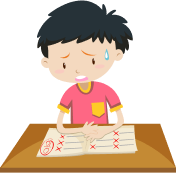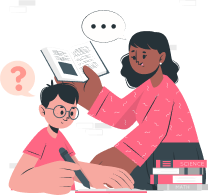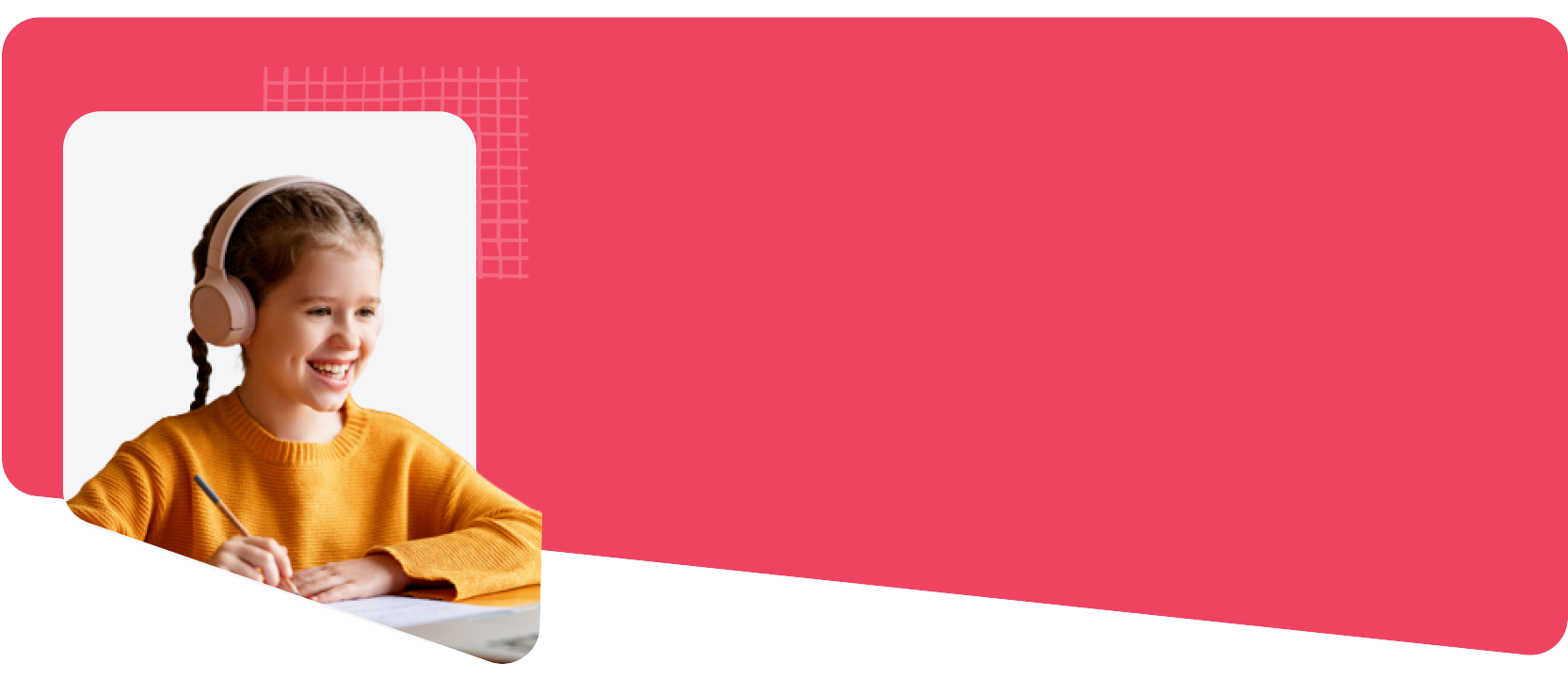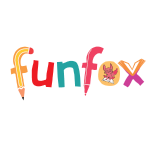When Your Child Starts to Read: The Magic Behind the Process
You’ve probably seen that spark, your child sounding out the letters in cat or proudly identifying their name on a piece of paper. It’s a heartwarming sign that your little one is learning to read. But have you ever wondered what’s actually happening inside their mind when they start to connect letters, sounds, and meaning?
That’s where the Science of Reading (SOR) comes in. Understanding this science helps parents and teachers create a learning environment that’s fun, structured, and truly impactful, especially in kindergarten, when literacy foundations are first built.
This guide explores how the Science of Reading works, why it matters in early education, and how programs like FunFox Readers Club make evidence-based learning both joyful and effective.
Quick Overview
-
The Science of Reading (SOR) is more than a method; it’s a research-backed approach showing how children truly learn to read.
-
It focuses on five pillars: phonological awareness, phonics, fluency, vocabulary, and comprehension, the foundation of strong literacy.
-
Early instruction matters. Kindergarten is where reading habits form, and structured lessons build lifelong confidence.
-
SOR replaces guesswork with systematic, explicit teaching, helping every child, not just natural readers, succeed.
-
FunFox Readers Club brings SOR to life with interactive lessons, small groups, and joyful reading experiences that nurture both skill and love for learning.
What Is the Science of Reading?
The Science of Reading refers to a body of research that explains how the brain learns to read. It combines findings from psychology, neuroscience, and education to identify the most effective ways to teach reading.
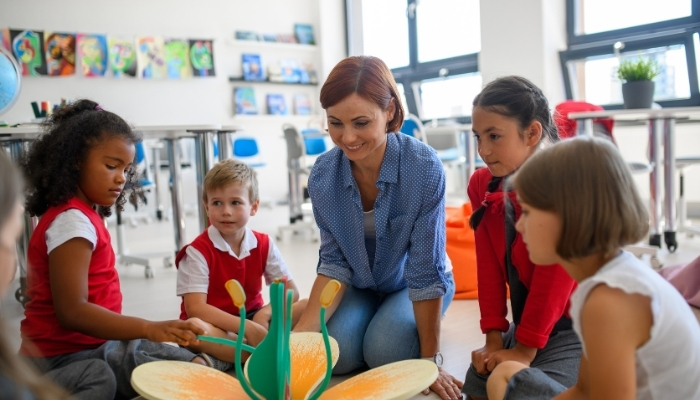
Unlike traditional “whole language” approaches that encourage children to guess words using pictures, the Science of Reading emphasizes systematic, explicit instruction, teaching children how sounds (phonemes) map to letters (graphemes).
In simpler terms:
-
Kids don’t just memorize words; they decode them.
-
Teachers guide them step by step, helping them understand how reading works.
-
Parents support this process at home with conversation, play, and reading routines.
For kindergarteners, this method is especially powerful because it builds essential early skills like sound awareness, decoding, and comprehension, the building blocks for lifelong literacy.
Why It Matters in Kindergarten
Children who develop strong phonological awareness are significantly more likely to become fluent readers later on. Research shows that these skills are the best predictors of early reading success.
At this stage, phonological awareness:
-
Helps children grasp that print represents sounds
-
Makes learning phonics easier and faster
-
Improves spelling and word recognition
-
Builds overall confidence and listening focus
Kindergarten is the ideal time to develop these abilities through consistent, playful, and interactive learning.
The Five Core Components of Reading (The SOR Framework)
The Science of Reading (SOR) is built around five essential pillars that together form the foundation of literacy development: phonemic awareness, phonics, fluency, vocabulary, and comprehension.
Each component plays a specific role in helping children move from recognizing sounds to understanding full stories. When these skills are taught explicitly and systematically, young readers develop confidence, accuracy, and a lifelong love for reading.
1. Phonemic Awareness: Hearing and Playing with Sounds
Phonemic awareness is the ability to hear and manipulate the individual sounds (phonemes) in spoken words. It’s a purely auditory skill that helps children recognize that words are made up of sounds.
How It Works: Teachers use fun, sound-based activities like rhyming games, syllable clapping, and sound blending (“What word do you get when you join /b/ and /at/?”). This builds the child’s awareness of sound patterns in everyday language.
Benefits:
-
Strengthens listening and sound discrimination skills
-
Builds the foundation for decoding words in print
-
Supports spelling and phonics readiness
-
Improves early confidence with word play and language rhythm
2. Phonics: Connecting Letters and Sounds
Phonics is the relationship between letters and their corresponding sounds. It helps children understand that print represents spoken language.
How It Works: Phonics instruction is systematic; teachers introduce sounds in a logical order, starting with simple consonants and short vowels before moving to blends and digraphs. Activities like letter-sound matching, word sorts, and magnetic letter play turn abstract concepts into hands-on learning.
Benefits:
-
Enables children to decode unfamiliar words independently
-
Reduces reliance on guessing or memorizing
-
Builds accurate spelling habits through sound-letter mapping
-
Forms the bridge between spoken and written language
3. Fluency: Reading Smoothly and Expressively
Fluency refers to reading text accurately, at a steady pace, and with natural expression. It’s the stage where reading shifts from effortful decoding to effortless understanding.
How It Works: Fluency develops through repetition and modeling. Teachers often use techniques like echo reading (teacher reads, child repeats), choral reading (read together), and readers’ theatre (acting out stories). These experiences train students to read with rhythm, tone, and emotion.
Benefits:
-
Builds confidence and motivation to read
-
Increases comprehension by freeing up mental energy
-
Helps children sound more natural and expressive when reading aloud
-
Encourages enjoyment and engagement with stories
4. Vocabulary: Expanding Word Knowledge
Vocabulary is the collection of words a child understands and uses. The richer the vocabulary, the easier it becomes to comprehend stories and communicate ideas.
How It Works: Teachers introduce new words in meaningful contexts, during storytime, discussions, or play. Words are reinforced through repetition, pictures, and conversation. Parents can continue this at home by labeling objects, describing daily activities, and reading aloud regularly.
Benefits:
-
Improves reading comprehension and oral communication
-
Helps children connect ideas across different subjects
-
Builds curiosity and confidence in using new words
-
Encourages creativity and better self-expression
5. Comprehension: Understanding and Thinking About What’s Read
Comprehension is the ability to understand, interpret, and reflect on what is read. It’s the ultimate goal of reading: making sense of words, ideas, and emotions.
How It Works: Comprehension is developed through guided reading discussions, story sequencing, and question-based interactions. Teachers encourage children to make predictions, retell stories, and connect story events to personal experiences.
Benefits:
-
Builds critical thinking and problem-solving skills
-
Deepens understanding of text and characters
-
Enhances memory retention and focus
-
Encourages empathy and imagination through storytelling
Together, these five components form a powerful framework that supports every stage of a child’s reading journey, from recognizing sounds to understanding meaning. Programs like FunFox Readers Club bring these elements to life through interactive, small-group lessons that make reading both structured and joyful.
Also Read: Engaging Reading Fluency Games for Students
Applying the Science of Reading in Kindergarten Classrooms
The Science of Reading comes to life when teachers turn research into engaging, structured lessons. In kindergarten, it means blending fun with focus, helping children connect sounds, letters, and meaning through daily, hands-on activities.

1. Phonological Awareness in Kindergarten
Before children can read words on a page, they must first hear how language works. Phonological awareness helps them recognize sounds, syllables, and rhymes, the first step toward understanding that print represents spoken words. This foundational skill predicts future reading fluency and spelling success.
-
Purpose: Build awareness of sounds that make up words.
-
Definition: The ability to hear, recognize, and manipulate parts of words (syllables, rhymes, beginning sounds).
-
Classroom Activities:
-
Rhyming song circles (e.g., “cat-hat-bat”)
-
Syllable clapping for names or classroom objects
-
Sound-matching games using pictures or toys
-
-
Teacher Tip: Keep sessions short and fun, 5–10 minutes daily builds lasting impact.
2. Implementing Phonics the Right Way
Once children can hear and identify sounds, phonics teaches them to connect those sounds with written letters. This step transforms listening into reading, the heart of decoding words accurately and confidently.
-
Purpose: Teach children how letters and sounds work together in a systematic, logical order.
-
Instruction Style: Use explicit, sequential lessons that start with single consonants and short vowels before moving to blends and digraphs.
-
Engaging Activities:
-
Word sorts: Group words by similar sounds or spelling patterns.
-
Making words: Use letter tiles to build and rebuild new words.
-
Sound races: Identify beginning or ending sounds through quick recognition games.
-
-
Teacher Tip: Revisit old patterns regularly for mastery before moving on to new ones.
3. Building Fluency and Expression
Fluency means more than reading quickly; it’s about reading smoothly, with feeling and accuracy. When children practice reading familiar stories aloud, they begin to sound natural and confident, which strengthens comprehension too.
-
Purpose: Help children become expressive, confident readers who understand tone and rhythm.
-
How It Works: Encourage repetition of familiar texts to build accuracy and automaticity.
-
Engaging Activities:
-
Echo reading: Teacher reads a line; students repeat.
-
Choral reading: Whole class reads together in rhythm.
-
Reader’s theatre: Act out short rhymes or story dialogues.
-
-
Teacher Tip: Model expressive reading, use tone, pauses, and enthusiasm to show how stories come alive.
4. Enhancing Vocabulary Skills
Vocabulary growth is how children learn to make sense of their world through words. A rich vocabulary allows them to describe, imagine, and understand more deeply, both in reading and in conversation.
-
Purpose: Expand children’s word knowledge through books, play, and discussion.
-
How It Works: Introduce new words in context, then reinforce them across subjects and daily activities.
-
Activities:
-
Discuss new words during read-alouds and pause for examples.
-
Label objects around the classroom or at home to connect meaning.
-
Encourage children to use new words in drawings or storytelling.
-
-
Home Strategies:
-
Talk about your day and describe experiences together.
-
Play word games like “What’s another word for happy?”
-
5. Developing Comprehension Abilities
Comprehension is the goal of all reading; it’s where decoding meets understanding. When children think about what they read, ask questions, and connect it to their lives, they build the foundation for lifelong learning.
-
Purpose: Help children understand, question, and engage with text meaningfully.
-
Core Techniques:
-
Read-alouds: Pause to ask open-ended questions (“Why do you think the bear hid?”).
-
Book walks: Preview the story through pictures before reading.
-
Prediction games: Ask what might happen next to encourage inference.
-
Story retelling: Have children draw or act out parts of the story.
-
-
Teacher Tip: Treat comprehension as a conversation, let children share thoughts freely.
Also Read: Reading Comprehension Games and Activities for Students
The Impact of the Science of Reading on Kindergarten Literacy
The Science of Reading (SOR) has reshaped how educators teach young learners, replacing guesswork with proven, research-based strategies. It helps every child, regardless of background or learning pace, build a strong foundation for lifelong literacy.
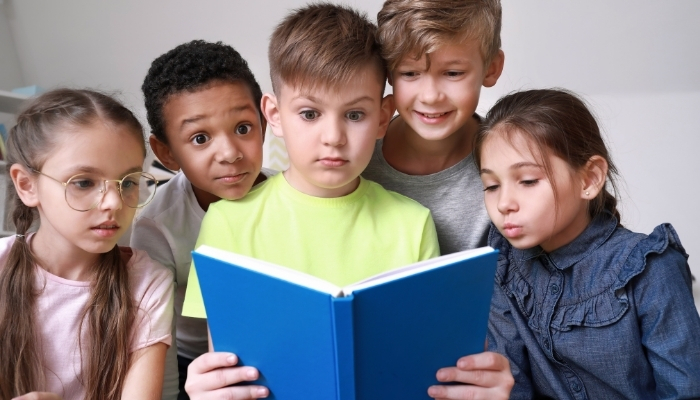
-
Evidence-Based Instruction: Lessons are guided by decades of cognitive and linguistic research rather than intuition or trends.
-
Early Intervention: Identifies skill gaps early, helping children who struggle with reading receive timely support.
-
Improved Reading Fluency: Students move beyond letter recognition to read smoothly and confidently.
-
Stronger Comprehension: By connecting phonics, vocabulary, and fluency, children begin to understand what they read, not just decode it.
-
Equitable Learning: SOR methods close literacy gaps between diverse learners by focusing on explicit, structured instruction.
-
Empowered Teachers: Educators feel more confident in their teaching strategies and can measure real progress.
-
Long-Term Outcomes: Children who master early reading skills through SOR are more likely to excel in writing, critical thinking, and overall academic achievement.
Final Words!
The Science of Reading gives every child the chance to build strong, lasting literacy skills from the very start. Each sound they recognize, each word they decode, and each story they comprehend adds to their growing confidence as readers. Every child learns at their own pace; what matters most is creating the right environment for that growth to flourish.
FunFox Readers Club brings the Science of Reading to life through structured, engaging, and child-centered lessons designed to make learning enjoyable and effective:
-
Small-group online classes (3–6 students) that allow for personalized attention.
-
Explicit, systematic instruction in phonics, vocabulary, and comprehension.
-
Interactive reading games and multisensory activities that make lessons exciting.
-
Real-time feedback and tailored guidance to support every learner’s progress.
-
Access to curated reading materials and take-home resources for continuous learning.
Take the first step toward empowering your kindergartener with a strong reading foundation. Enroll in FunFox Readers Club today and watch the Science of Reading transform learning into joy!
FAQs
1. What is the Science of Reading (SOR)?
The Science of Reading is a body of research that explains how children learn to read. It focuses on structured, evidence-based methods that develop phonemic awareness, phonics, fluency, vocabulary, and comprehension, helping every child build literacy skills step by step.
2. Why is the Science of Reading important in kindergarten?
Kindergarten is where reading foundations begin. SOR ensures that children aren’t just memorizing words but truly understanding how language works. It helps them connect sounds, letters, and meaning, building confidence and long-term reading success.
3. How does the Science of Reading differ from traditional teaching methods?
Traditional reading approaches often rely on memorization or picture cues. The Science of Reading uses structured, systematic instruction, teaching children exactly how sounds map to letters, which leads to stronger decoding, spelling, and comprehension.
4. Can the Science of Reading help struggling readers?
Yes! SOR is especially effective for children who find reading difficult. It identifies where a child struggles, like with sound recognition or comprehension, and provides clear, step-by-step support to build those missing skills.








